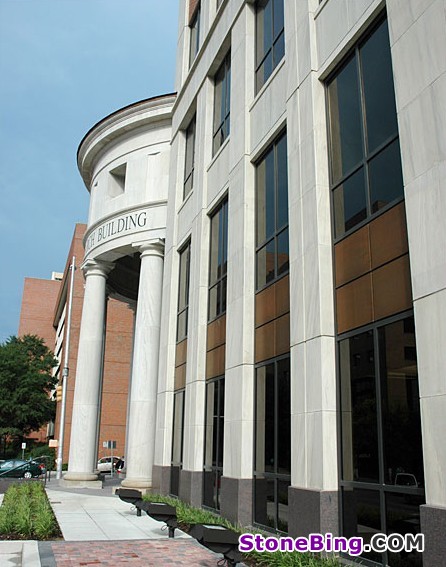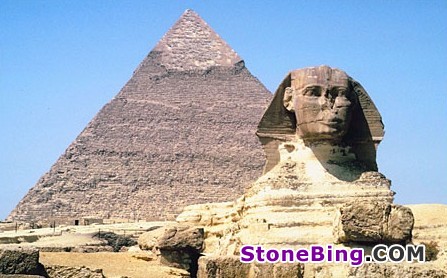
The University of Alabama, Birmingham, Shelby Interdisciplinary Biomedical Research Building was constructed using Vetter Stone's Alabama Silver Shadow oolitic limestone. The architect was CUH2A, Princeton, N.J.
Limestone is sedimentary rock composed largely of calcite (calcium carbonate) that can be found throughout much of the world. Available as an oolitic or dolomitic stone, Limestone generally is a non-crystalline stone (i.e., does not take a polish) that displays a uniform composition, texture and structure. The stone is formed as a result of millions of years of deposits of seashells and fossilized sea creatures. The calcium in the bones and shells combines with carbon dioxide in the water to form calcium carbonate, which is the basic mineral structure of all limestone. And its prevalence around the globe provides real insight and positive evidence of just how much more of our planet used to be covered in water, as a result of various ice ages or glacial periods over millions of years.
Because it is readily available and easy to cut into blocks or more elaborate shapes, limestone is a popular building material in architecture.
Quarries of Limestone
Around the world, limestone quarries can be found throughout Europe, as well as in parts of Asia, Africa and in Australia, where the southeastern part of the country is nicknamed "The Limestone Coast." Much of the region is low-lying and was flooded by sea as recently as 2 million years ago. Scientists also say The Limestone Coast was inundated by a glacial period 15 to 20 million years ago.
Colors of Limestone
Often thought of just as a ubiquitous, creamy white stone used by sculptors and interior accessories (tiles, sinks, etc.) craftspersons, limestone actually is much more aesthetically diverse. Its color palate is among the most distinct available in nature ? created through mineral and organic impurities such as clay, sand, iron oxide and fossilized marine organisms. These "impurities," nature's aggregates if you will, actually strengthen the limestone making it suitable for applications that require more durability or structural strength.
The range of colors can go from simple coffee browns, latte-tinted beiges, and winter greys to richer shades of honey yellow, speckled black, soft blues and other hues in between.
Applications of Limestone
Often incorporated into designs to give a certain Old World charm, limestone also can be used in many of its various shades to provide a contemporary, modern edge. As a building material, limestone is adaptable to many applications and building styles. For years, limestone has been many designers' choice for bathroom floors and backsplash tile applications, but it also has been used commonly for flooring in kitchens, halls, living and dining rooms, and in commercial spaces. Further, limestone is known as a good conductor of heat and is ideal where under-floor heating is required. Other common applications include countertops, fireplaces, landscaping and even roofing.
Since limestone is known as a porous stone, finishes are an important part of the installation process. According to experts, when limestone is impregnated with a high-quality sealer that absorbs into the stone, it will prevent liquids or food stains from seeping into the pores, allowing limestone to be utilized for kitchen countertops or other food preparation areas. Further, such sealers allow for limestone to be used in moisture-rich environments, such as showers and baths, while still providing the unique mix of texture and color that only this type of stone exhibits.

Egypt is a country rich in stone, particularly limestone, which occurs in many varieties there.
Interesting Facts
Limestone has been a common building material around the world for centuries. Many of the monuments, churches, government buildings and other structures still stand today as a testament to limestone's durability. For example, many of Europe's medieval castles were built with blocks of limestone and survive today as vital, historical links to the past, as well as intriguing tourist attractions. But perhaps the best known of all ancient limestone structures are Egypt's pyramids.
Egypt is a country rich in stone, particularly limestone, which occurs in many varieties there, such as black, yellow and pink. The material was used extensively by the ancient Egyptians to construct temples and buildings, including the pyramids ? from the rough limestone used on the monuments' cores, to the finer, white limestone often employed for the pyramids' interior walls.







